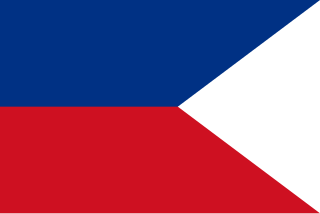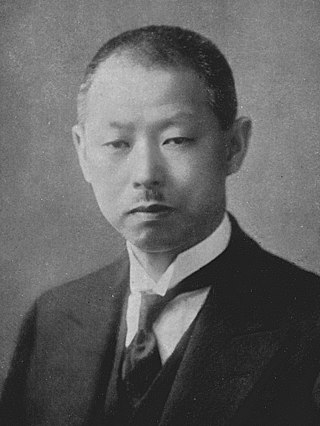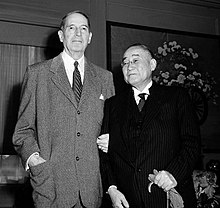A keiretsu is a set of companies with interlocking business relationships and shareholdings that have dominated the Japanese economy since the second half of the 20th century. In the legal sense, it is a type of informal business group that is loosely in an organized alliance within the social world of Japan's business community. It rose up to replace the zaibatsu system that was dissolved in the occupation of Japan following the Second World War. Though their influence has shrunk since the late 20th century, they continue to be important forces in Japan's economy in the early 21st century.

Japan was occupied and administered by the victorious Allies of World War II from the surrender of the Empire of Japan on September 2, 1945 at the end of the Second World War until the Treaty of San Francisco took effect on April 28, 1952. The occupation, led by the American military with support from the British Commonwealth and under the supervision of the Far Eastern Commission, involved a total of nearly one million Allied soldiers. The occupation was overseen by the U.S. General Douglas MacArthur, who was appointed Supreme Commander for the Allied Powers by the U.S. President Harry S. Truman; MacArthur was succeeded as supreme commander by General Matthew Ridgway in 1951. Unlike in the occupation of Germany and the occupation of Austria, the Soviet Union had little to no influence over the occupation of Japan, declining to participate because it did not want to place Soviet troops under MacArthur's direct command.

Nobusuke Kishi was a Japanese bureaucrat and politician who was prime minister of Japan from 1957 to 1960.

Zaibatsu is a Japanese term referring to industrial and financial vertically integrated business conglomerates in the Empire of Japan, whose influence and size allowed control over significant parts of the Japanese economy from the Meiji period to World War II. A zaibatsu's general structure included a family-owned holding company on top, and a bank which financed the other, mostly industrial subsidiaries within them. Although the zaibatsu played an important role in the Japanese economy from the 1868 to 1945, they increased in number and importance following the Russo-Japanese War, World War I, and Japan's subsequent attempt to conquer East Asia and the Pacific Rim during the inter-war period and World War II. After World War II, they were dissolved by the Allied occupation forces and succeeded by the keiretsu. Equivalents to the zaibatsu can still be found in other countries, such as the chaebol conglomerates of South Korea.

The Supreme Commander for the Allied Powers was the title held by General Douglas MacArthur during the United States-led Allied occupation of Japan following World War II. It issued SCAP Directives to the Japanese government, aiming to suppress its "militaristic nationalism". The position was created at the start of the occupation of Japan on August 14, 1945. It was originally styled the Supreme Commander of the Allied Powers.
In history, religion and political science, a purge is a position removal or execution of people who are considered undesirable by those in power from a government, another organization, their team leaders, or society as a whole. A group undertaking such an effort is labeled as purging itself. Purges can be either nonviolent or violent, with the former often resolved by the simple removal of those who have been purged from office, and the latter often resolved by the imprisonment, exile, or murder of those who have been purged.
The Reverse Course is the name commonly given to a shift in the policies of the U.S. government and the U.S.-led Allied occupation of Japan as they sought to reform and rebuild Japan after World War II. The Reverse Course began in 1947, at a time of rising Cold War tensions. As a result of the Reverse Course, the emphasis of Occupation policy shifted from the demilitarization and democratization of Japan to economic reconstruction and remilitarization of Japan in support of U.S. Cold War objectives in Asia. This involved relaxing and in some cases even partially undoing earlier reforms the Occupation had enacted in 1945 and 1946. As a U.S. Department of State official history puts it, "this 'Reverse Course'...focused on strengthening, not punishing, what would become a key Cold War ally."

Yoshisuke Aikawa was a Japanese entrepreneur, businessman, and politician, noteworthy as the founder and first president of the Nissan zaibatsu (1931–1945), one of Japan's most powerful business conglomerates around the time of the Second World War.

Charles Andrew Willoughby was a major general in the U.S. Army, serving as General Douglas MacArthur's chief of intelligence during most of World War II and the Korean War.

The 1955 system (55年体制), also known as the one-and-a-half party system, is a term used by scholars to describe the dominant-party system that has existed in Japan since 1955, in which the Liberal Democratic Party (LDP) has successfully held by itself or in coalition with Komeito a majority government nearly uninterrupted with opposition parties, other than for brief stints in 1993–1994 and 2009–2012, largely incapable of forming significant or long lasting alternatives. The terms 1955 system and the one-and-a-half party system are credited to Junnosuke Masumi, who described the 1955 system as "a grand political dam into which the history of Japanese politics surge".
The Asia First strategy was pushed for in the early 1950s by the powerful China Lobby of the Republican Party in the United States.
The U.S. Initial Post-Surrender Policy for Japan is a legal document approved by U.S. President Harry S. Truman on September 6, 1945, which governed U.S. policy in the occupation of Japan following surrender in the Second World War. It was released to the public on September 22, 1945.
Japanese competition law consists of the Antimonopoly Act, officially the Act on Prohibition of Private Monopolization and Maintenance of Fair Trade, and several other statutory laws.

Tanzan Ishibashi was a Japanese journalist, Nichiren Buddhist priest, and politician who was prime minister of Japan for two months from 1956 to 1957, before resigning due to illness. He simultaneously served as Director General of the Japan Defense Agency. From 1952 to 1968 he was also the president of Rissho University. As a member of the Nichiren-shū sect of Nichiren Buddhism, Tanzan was his Buddhist name; his birth name was Seizō (省三).

Eleanor Martha Hadley was an American economist and policymaker. Because of her relatively rare research specialization in Japanese economics, during World War II Hadley was recruited first into OSS and then the State Department to support the United States' war effort while she was a doctoral candidate in economics at Radcliffe College. Hadley helped draft the United States' plans for dissolving zaibatsu business conglomerates as part of a planned effort to democratize Japan after the war, and she participated in implementing this economic deconcentration program when the postwar occupation brought her to Japan to work for SCAP as an economist.
Thomas Arthur Bisson, who wrote as T. A. Bisson was an American political writer, journalist, and government official who specialized in East Asian politics and economics.
Thomas Compton Packenham, was a British-American journalist. He served as a British Army officer in the First World War, and worked at the American Council on Japan.
The Red Purge was an anticommunist movement in occupied Japan from the late 1940s to the early 1950s. Carried out by the Japanese government and private corporations with the aid and encouragement of the Supreme Commander for the Allied Powers (SCAP), the Red Purge saw tens of thousands of alleged members, supporters, or sympathizers of left-wing groups, especially those said to be affiliated with the Japanese Communist Party, removed from their jobs in government, the private sector, universities, and schools. The Red Purge emerged from rising Cold War tensions and the Red Scare after World War II, and was a significant element within a broader "Reverse Course" in Occupation policies. The Red Purge reached a peak following the outbreak of the Korean War in 1950, began to ease after General Douglas MacArthur was replaced as commander of the Occupation by General Matthew Ridgway in 1951, and came to a final conclusion with the end of the Occupation in 1952.

The activities of the Central Intelligence Agency (CIA) in Japan date back to the Allied occupation of Japan. Douglas MacArthur's Chief of Intelligence, Charles Willoughby, authorized the creation of a number of Japanese subordinate intelligence-gathering organizations known as kikan. Many of these kikan contained individuals purged because of their classification as war criminals. In addition, the CIA organized and financed a Japanese intelligence gathering program, Operation "Takematsu", utilizing the kikan as part of an intel gathering operation against North Korea, the Kuril Islands, and Sakhalin. One of the kikan created, the "Hattori group", lead by Takushiro Hattori, plotted to stage a coup d'etat and assassinate Prime Minister Shigeru Yoshida on account of his opposition to Japanese nationalism.

The February 1 General Strike was a general strike planned by Japanese labor unions for February 1, 1947, with the goal of fighting for the implementation of the ten demands proposed in last December, including the abolition of the income tax. The strike was eventually stopped by order of SCAP.











